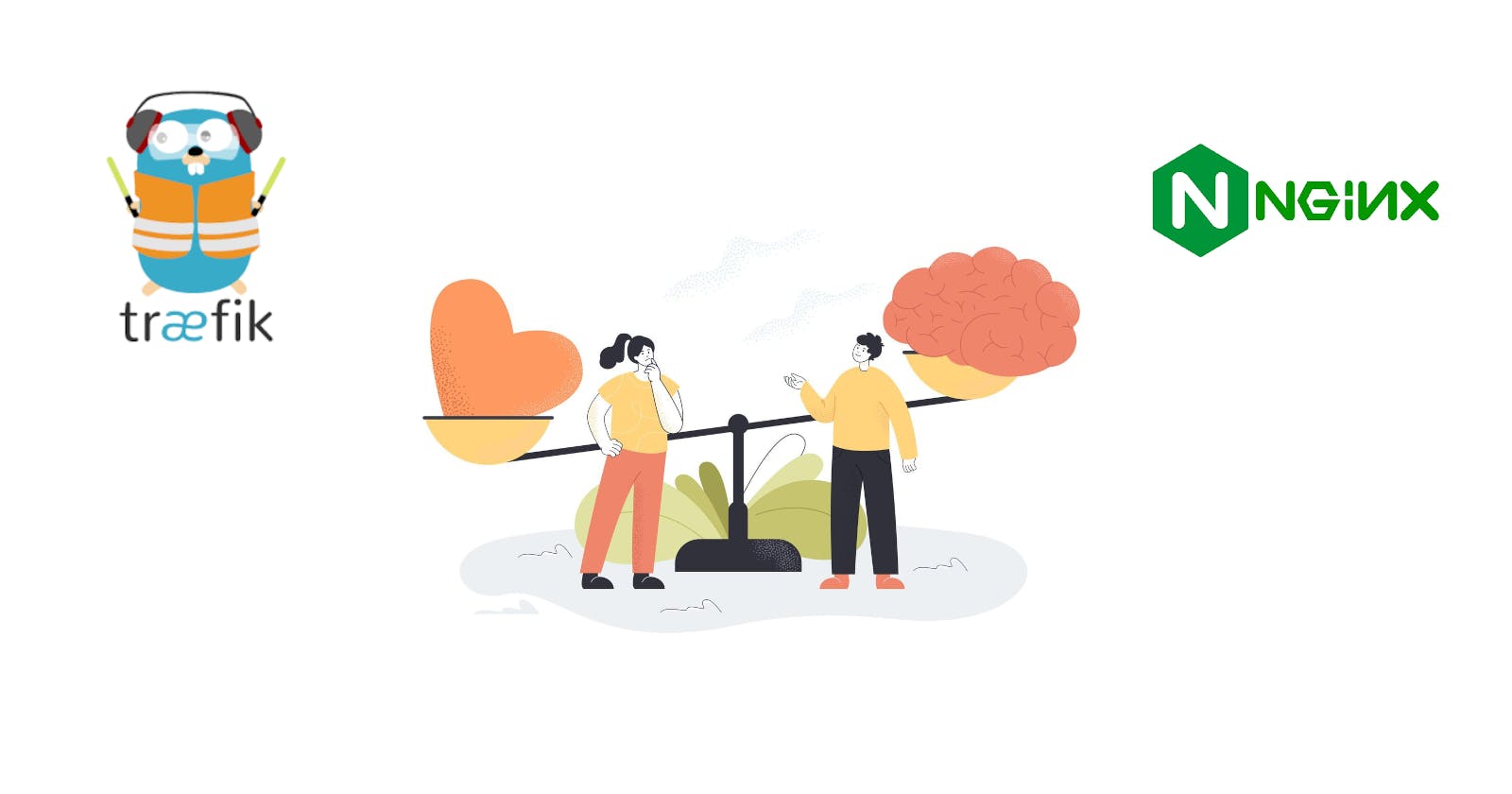Comparing Traefik vs Nginx
Contrasting Traefik and Nginx: Focus, Configuration, SSL/TLS, Routing, Community, Deployment, Monitoring, Licensing.
Introduction
Traefik and Nginx are both popular reverse proxy servers used in modern web infrastructure. Traefik is designed specifically for microservices architectures and containerized environments, while Nginx has a broader range of uses including traditional web serving, load balancing, and caching.
Simpler Explanation
Imagine Traefik as a specialized traffic cop for microservices, guiding requests to the right service based on rules. Nginx, on the other hand, is like a versatile traffic controller managing various types of traffic on a busy intersection.
Similarities
| Aspect | Explanation |
| Reverse Proxy | Both Traefik and Nginx can act as reverse proxies, forwarding requests from clients to backend servers. |
| Load Balancing | They both support load balancing, distributing incoming requests among multiple servers for efficiency. |
| TLS Termination | Both can handle SSL/TLS termination, decrypting incoming encrypted traffic before forwarding it internally. |
| Web Server | Nginx is well-known as a web server, while Traefik can also serve static content but is more tailored for microservices. |
| Configuration | Both have flexible configuration options, allowing users to customize settings for their specific needs. |
Here's a table highlighting the differences between Traefik and Nginx:
| Aspect | Traefik | Nginx |
| Primary Focus | Microservices and containerized environments | General-purpose web serving, load balancing, and caching |
| Configuration | YAML-based configuration suited for dynamic environments and container orchestration platforms | Configuration files in Nginx's own syntax, more traditional setup for web server configurations |
| SSL/TLS Handling | Automatic SSL certificate management for containerized applications | Requires manual configuration for SSL certificates, more control over SSL/TLS settings |
| Routing Flexibility | Built-in support for dynamic routing based on labels, tags, or service metadata | Powerful routing capabilities but requires more manual configuration for dynamic routing |
| Community Support | Strong community focus on microservices and cloud-native technologies | Extensive community support across various web server and proxy use cases |
| Learning Curve | Easier learning curve for developers familiar with YAML and container orchestration concepts | Steeper learning curve for complex configurations, especially for beginners |
| Deployment Scenarios | Ideal for modern, cloud-native applications and microservices architectures | Suitable for a wide range of applications, including static websites, APIs, and reverse proxy |
| Monitoring and Metrics | Provides built-in metrics and monitoring capabilities for containerized environments | Requires additional plugins or configurations for advanced monitoring and metrics |
| Licensing | Open-source with a permissive license (MIT) | Open-source with a BSD-like license, also available as a commercial product (NGINX Plus) |
Use Cases
Traefik:
Routing requests to microservices based on path or domain.
Automatic SSL certificate management for containerized applications.
Load balancing traffic across multiple instances of a service.
Integrating with container orchestration platforms like Kubernetes.
Serving dynamic configurations based on real-time metrics.
Nginx:
Hosting static websites and serving as a traditional web server.
Load balancing HTTP, HTTPS, TCP, and UDP traffic.
Caching frequently accessed content to improve performance.
Acting as a reverse proxy for handling requests to backend servers.
Securing applications with SSL/TLS encryption and authentication.
Conclusion
In conclusion, Traefik excels in microservices and container environments, offering automatic configuration and dynamic routing, while Nginx is a versatile solution suitable for a wide range of use cases including web serving, load balancing, and caching. The choice between them depends on the specific needs and architecture of the application or infrastructure being deployed.

